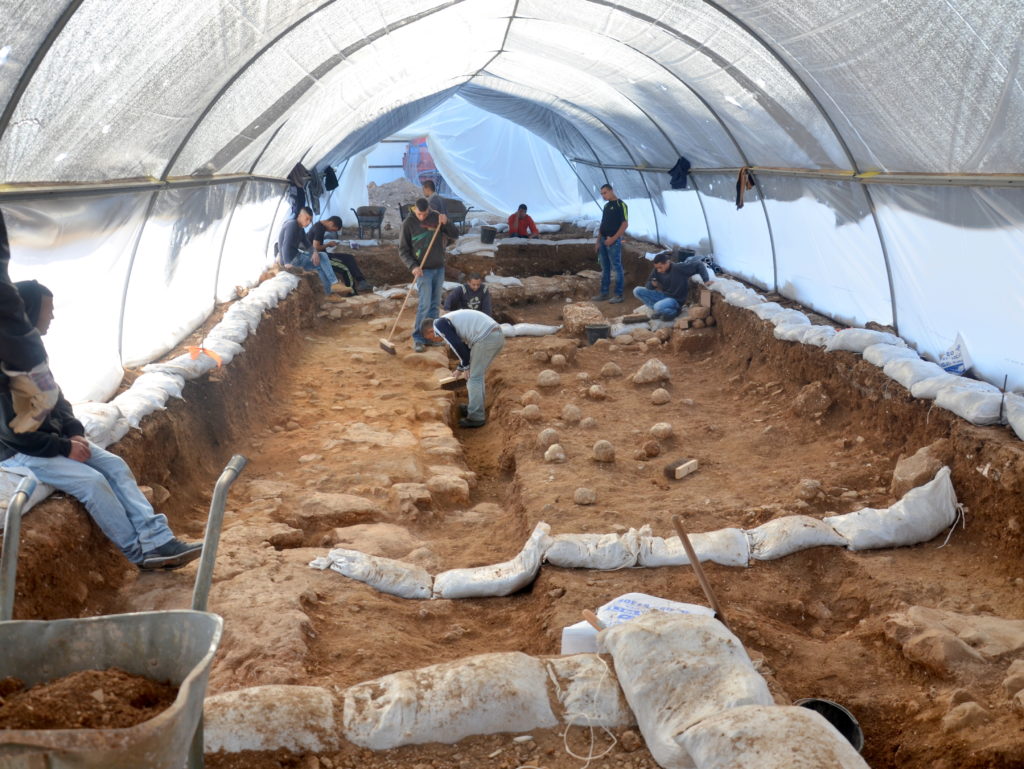The evidence was presented on Sunday, which coincided with Tisha b’av – the ninth day of the Hebrew month of Av, when Jews mourn the destruction of both the first and the second Holy Temples in Jerusalem.
By World Israel News Staff
The Israel Antiquities Authority has presented the results of a new research project that sheds light on the power of the Roman army and the spots of their attack on Jerusalem in the battle that led to the destruction of the Second Temple.
The announcement was made on Sunday, which coincided with Tisha b’av – the ninth day of the Hebrew month of Av, which is the anniversary of the destruction of both the first and the second Holy Temples in Jerusalem.
In fact, the date this year was on Saturday, but due to the Sabbath, which according to Jewish law takes precedence over Tisha b’Av, the fast is being observed on Sunday.
“The Fast of the 9th Av commemorates the day of the destruction of the Second Temple,” says Israel Antiquities Authority researcher Kfir Arbiv. “The Temple was destroyed in 70 CE, after a four-month siege and an intensive battle led by the Roman general Titus in order to conquer the city and suppress the revolt initiated by the Jews four years earlier. The Romans had a well-trained massive army, equipped with the best military innovations of their day. It was a ruthless war machine.”
Arbiv systematically recorded Roman military equipment retrieved in excavations in Jerusalem, many of which were found in the excavations that he directed, together with Dr. Rina Avner, in the Russian Compound, adjacent to the Jerusalem Municipality building.
The Roman Arsenal exposed to date includes hundreds of different-sized ballista stones that were launched from sophisticated bolt-throwing machines to a distance of 100–400 m, small slingstones used by trained infantry, and catapult machines that launched spearheads for a distance of 150–200 m. Spears, swords and arrowheads, including heavy arrowheads that could penetrate armor.
“We know from the historical sources that the Roman army employed massive siege rams to batter the fortification walls, and siege towers that reached the height of the walls, but these have not yet been found in Jerusalem,” says Amit Reem, director of Israel Antiquities Authority Jerusalem Region.
Arbiv’s research focused on the hundreds of ballista stones, and his analysis defined different sizes and weights. Some, directed against people, were launched against the walls to prevent the Jewish rebels from emerging above the walls, and other heavier ones were launched fiercely against the walls to penetrate them.
According to Arbiv, “With the help of the computer, I located all the ballista exactly where they were found. I took into account the local topography and the location of the Second Temple-period city fortification walls, and I made ballistic calculations, including the launching angle, and the throwing distance of the stones. All the data was compared to the renown Jewish historian Josephus’ contemporary detailed descriptions of the battle, and the conquest and destruction of Jerusalem, in his book, The History of the Jewish War against the Romans.”
According to the research, some of the Roman army artillery machines were located in the center of the modern city of Jerusalem, in the Nahalat Hashiva area, nicknamed ‘Cats’ Square’. The research also show,s for the first time, the probable pots where the Roman army penetrated the city. The Russian Compound excavations exposed part of the Third Wall, the third line of defense that surrounded the city.
An exceptionally large concentration of ballista stones was found at one point, some broken after use. It was evident that the Roman army concentrated their efforts here, and hundreds, if not thousands of ballista stones, were directed to this spot. “T
his is not surprising,” says Arbiv, “as whoever controls this spot, dominates the whole area and the fate of the city. This aligns with Josephus’ account that Titus commanded to penetrate the city from the northwestern side of the city wall.”
According to Eli Eskosido, director of the Israel Antiquities Authority, “the physical evidence of the huge resources employed by the Roman army in Jerusalem, reflect the extremely harsh battles that eventually led to the destruction of the Second Temple. Notwithstanding the internal factions and the impossible odds, a small group of Jewish defenders withheld the Romans for a few months until the tragic destruction of the city.
“The use of up-to-date research methods reveal more and more on the fascinating history of Jerusalem.”


